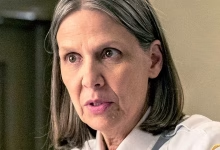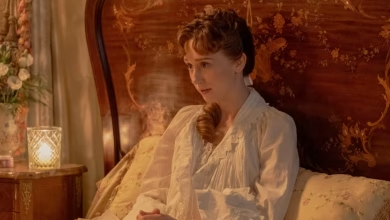The Witcher Season 4’s Problem Was Never Liam Hemsworth
Our first look at Liam Hemsworth as Geralt of Rivia in Netflix’s The Witcher Season 4 dropped last month, and despite all the hubbub, it proved perfectly adequate. But then, of course it did – Hemsworth was never the fourth season’s big problem.
Oh, sure, plenty of fans continue to lament original Geralt Henry Cavill’s series exit, and rightly so. Cavill was a great fit for the role, and not just because of his formidable physique and gruff line readings. The British star is also keenly familiar with Andrzej Sapkowski’s Witcher novels and the CD Projekt video games they spawned, and he drew upon this knowledge when crafting his performance. As such, replacing him with anyone was always going to be a tall order.
But here’s the thing: not even Henry Cavill could’ve saved The Witcher Season 4. It would’ve been just as doomed to endure a seemingly inevitable lukewarm reception with him at the helm as with Hemsworth. And it’s all because of that big problem I alluded to earlier: nobody cares about the Netflix Witcher show anymore.
The Witcher’s Big Problem Is Made Up of Smaller Problems
Okay, that might be a little extreme. Obviously, some people still care about The Witcher (and good for them, honestly). But plenty of fans gave up on the Netflix series two or even three seasons ago. They may keep tuning in, however, this is more out of morbid curiosity than genuine enthusiasm. Even Cavill reportedly became fed up with the show; it’s allegedly part of the reason he left. And when your leading man is (again: allegedly) over it, that’s never a good sign. So, what’s the cause of all this apathy, if not outright hate? As it turns out, The Witcher‘s big problem is made up of many smaller problems – three of which are especially to blame.
The first of these is the quality of the show’s writing and adaptation choices. In showrunner Lauren Schmidt Hissrich and her team’s defense, retelling The Witcher was never going to be easy. As with all adaptations, Hissrich and co. can’t just directly translate stuff from the page to the screen; changes must be made to accommodate the TV medium. But even allowing for this, they sure have made some avoidable missteps. The multiple timelines in The Witcher Season 1 were a confusing mess. Seasons 2 and 3 were mercifully more linear, but often jumbled, rushed, or both.
The same goes for character motivations across The Witcher‘s three seasons to date. Why the show’s supporting players – or even Geralt’s love interest, Yennefer – do many of the things they do is often murky at best, and outright contradictory at worst. And as for The Witcher‘s dialogue? It’s fine – so long as nobody has to explain anything (Which they do. At length. Often.). But most importantly of all, the spirit of the source material just isn’t there. The Witcher books are about shades of grey and tough choices. The show? Not so much.
Forget Vilgefortz – Geralt’s Real Enemy is Cheap-Looking Creatures and Sets
But hey, at least it all looks good, right? Well, kinda. The Witcher‘s second little-big problem is how uneven its production values are.
Yes, there are plenty of sweeping vistas, eye-catching costumes, expertly choreographed action scenes, and jaw-dropping CGI and practical effects beasties. However, there are at least as many examples of the above that feel decidedly second-rate. This is particularly true of some of the show’s creatures, who look like escapees from 90s cult classic Xena: Warrior Princess (looking at you, Season 1’s goat man). To be blunt: the makeup and visual effects often look cheap.
The costumes are the same. True, Geralt’s kit looks about right, but so many people around him look like they’re in fancy dress. Nothing feels real or lived in, as you’d expect in the harsh confines of the Continent. This extends to The Witcher‘s sets, as well. There’s a bit of grime, but whether we’re in a forest, village, or fortress keep, that extra bit of production polish – or rather lack of it, as the case may be – kills the illusion of peering into a strange new world.
It Doesn’t Matter Who Plays Geralt in The Witcher if the Vibe’s All Wrong

Yet ultimately, what really keeps most folks from investing in The Witcher is that it just doesn’t feel right. If that’s too vague, I’ll put it another way: it’s not European enough. No, I’m not talking about the show’s diverse casting choices; I mean its vibe is too nondescript. We’re bombarded with plenty of exotic character, creature, and location names (not to mention a slew of magic rules), but it’s all just superficial window dressing. The heart of Sapkowski’s books – their idiosyncratic, trope-inverting melange of Slavic folklore and more mythologies besides – is gone.
In its place, there’s just a generic fantasy story, populated with mildly diverting heroes and villains and (at best) cool-looking monsters. It’s not just me saying it, either. One of The Witcher‘s executive producers, Tomek Baginski, admitted this was the case in a 2023 interview. According to Baginski, the show’s crew intentionally streamlined the canon of the books to avoid confusing American viewers. Whatever the rationale, this approach is yet another way in which The Witcher came up short during Cavill’s tenure, and will almost certainly continue to do so now he’s out of the picture.



